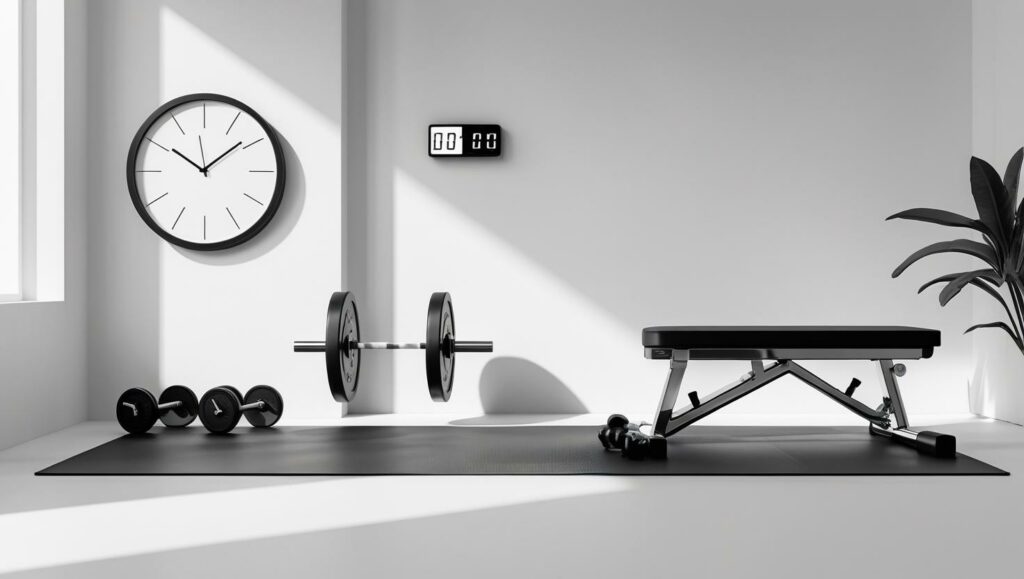The answer isn’t one-size-fits-all. It depends on goals, body type, experience level, and even the type of training. But there are guiding principles that can help anyone optimize their time in the gym without overtraining or underperforming.
The Purpose Behind the Workout
Before deciding how much time to spend training, it’s crucial to understand the goal. A session focused on muscle gain might look very different from one centered around fat burning or endurance building.
If your goal is building strength, your session may include longer rest periods between heavy sets. If your focus is fat loss, the workout might be shorter but more intense. Purpose shapes duration.
Understanding Intensity and Volume
Workout intensity and total volume play a big role in determining the ideal session length. A highly intense session involving compound lifts may only require 45 minutes. On the other hand, a low-intensity endurance circuit could last over an hour.
The key is balancing intensity with rest and ensuring your body gets enough time to recover without overstressing it in a single session.
Beginners Versus Advanced Athletes
Those just starting their fitness journey typically benefit from shorter, focused workouts. These allow for habit formation without causing excessive fatigue or injury risk. A beginner might thrive with 30 to 45 minutes of training.
Advanced lifters or athletes often train longer due to their ability to handle more volume and incorporate complex routines. But even then, overtraining remains a risk without proper programming.
What Science Suggests
Research shows that 45 to 75 minutes tends to be the sweet spot for most types of gym training. Beyond that, the body’s cortisol levels — the stress hormone — begin to rise, potentially counteracting recovery and muscle development.
While this doesn’t mean longer sessions are harmful, it does suggest that efficiency should be prioritized over sheer duration. Quality always beats quantity when it comes to fitness.
The Impact of Rest Periods
Training with longer rest intervals, such as during strength or powerlifting workouts, will naturally extend your session. A typical leg day might stretch beyond an hour if heavy lifts are involved with full recovery between sets.
On the flip side, short rest periods common in circuit training or HIIT sessions keep workout duration lower while maintaining effectiveness. It’s all about how the time is used, not just how much of it is spent.
Program Structure Matters
A well-structured gym plan includes warm-up, activation drills, the main workout, and a cooldown. Skipping any of these sections may save time but can reduce performance and increase the risk of injury.
Even a short session of 30 to 40 minutes can be effective if structured well. It’s not just about being in the gym — it’s about what you’re doing while you’re there.
Listening to Your Body
Fitness isn’t static. There are days when you feel strong, focused, and energized. Other days, fatigue or stress may make long sessions feel draining. That’s when listening to your body becomes more important than following a rigid schedule.
Recovery and energy levels should guide how much you push. Some of the most effective sessions are under 40 minutes when done with focus and intention.
Time Constraints and Consistency
Most people juggle fitness with careers, family, and responsibilities. So, practicality matters. A consistent 30-minute session four times a week often delivers better results than irregular two-hour workouts once a week.
Consistency wins over time. It’s the small, repeated efforts that build habits, strengthen muscles, and improve overall health.
Cardio and Weight Training Balance
When combining cardio and resistance training, the overall session time may increase. If you’re doing both in the same session, aim for balance. For example, 40 minutes of lifting followed by 20 minutes of cardio.
But even then, consider separating these modalities on different days if your goal is to maximize results in each area without overtraining.
Home Workouts and Minimal Equipment
Many people now train from home or in minimalistic setups. In these cases, sessions often become shorter because there’s less rest time between exercises. Circuit training or bodyweight routines can be done in as little as 25 to 30 minutes with great results.
Efficiency and focus are key here. Without the distractions of a full gym, home workouts shine in saving time while still delivering gains.
Should You Train Every Day?
Even if your sessions are brief, training every single day may not be ideal without sufficient variety or recovery. The body thrives on a mix of stress and rest. That’s how growth happens.
Instead of daily intense training, alternate between strength, cardio, flexibility, and mobility days. That allows for sustainable fitness and prevents plateaus or burnout.
Tracking Progress and Adapting
Use apps or a simple journal to track your workout time, intensity, and results. Over time, this helps you identify patterns — when you’re most productive, how long your recovery takes, and what durations produce the best outcomes.
Don’t be afraid to tweak your gym session length based on progress. Flexibility in your plan leads to long-term adherence and success.
Closing Thought on Gym Time
So, how long should a gym session be? The most honest answer is: long enough to meet your goal, but not so long that it drains your energy or motivation. Whether it’s 30 or 75 minutes, what matters is the structure, intention, and effort behind every rep.
Find the balance that works for your lifestyle. Use your time wisely. And remember, consistency — not perfection — is what truly shapes your fitness journey.






